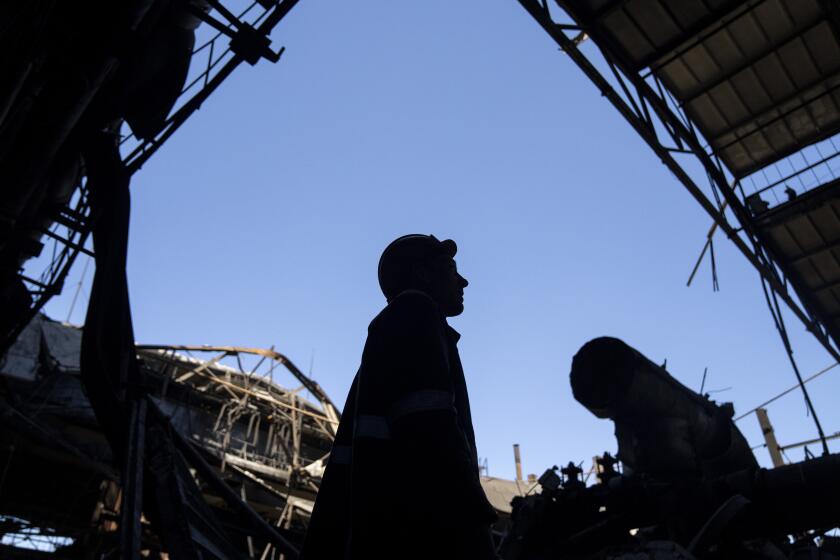Israel Moves Deeper Into Lebanon
July 30
The U.S. announces that Israel has agreed to halt its bombing campaign for 48 hours and allow civilians safe passage out of southern Lebanon. The move follows international outrage sparked by an airstrike in Qana whose victims included a number of children. Initial reports say 54 people were killed, but several days later officials say they can not confirm 26 of those deaths.
The outcry forces Secretary of State Condoleezza Rice, in Jerusalem, to cancel a trip to Beirut.
Israel expresses regret over the deaths but blames Hezbollah for triggering violence and says it had warned noncombatants to flee.
July 31
Israel says its campaign against Hezbollah will continue, and senior officials decide to widen the ground offensive, saying the halt in airstrikes is a humanitarian gesture, not a prelude to a cease-fire.
Israeli airstrikes and Hezbollah rocket attacks diminish but do not stop. Humanitarian agencies move to take advantage of the lull but say damaged roads, limited fuel and confusion over the terms of the hiatus hinder their operations. Fleeing residents and aid workers jam improvised bridges over the Litani River, which divides southern Lebanon from the rest of the country.
Aug. 1
Thousands of Israeli troops push deep into Lebanese territory, crossing the Litani River. A smaller commando force lands by helicopter in the city of Baalbek in the Bekaa Valley, east of Beirut, and captures several members of Hezbollah. An Israeli minister predicts that the offensive will last 10 to 14 more days.
Hezbollah fires 10 rockets and four mortar shells into northern Israel in another comparatively light day of attacks.
Diplomatic efforts falter, and humanitarian aid groups say they are having difficulty getting assistance to civilians.
Israel temporarily lifts its blockade of the Lebanese coast to let in two oil tankers to supply fuel-starved power plants.
Aug. 2
Hezbollah launches its largest barrage of rockets to date into northern Israel, killing a man at a kibbutz north of Nahariya and injuring dozens of people. The more than 230 rockets set fires and smash buildings, and two fall 40 miles south of the Lebanese border. A new ground assault brings the number of Israeli troops in action to 10,000 with fighting taking place mostly along a 25-mile stretch of the border. Israeli commandos borne by helicopters raid a hospital complex serving as Hezbollah offices in Baalbek.
A Los Angeles Times/Bloomberg poll finds that most Americans think Israel’s bombing campaign is justified.
The United Nations Security Council remains divided over whether to deploy peacekeepers before a cease-fire is in place.
Aug. 3
Israel suffers its largest one-day loss of life in the conflict -- eight civilians and four soldiers -- as Hezbollah fires more than 200 rockets into the country’s north. The militant group’s leader, Sheik Hassan Nasrallah, threatens to strike Tel Aviv in retaliation for any strike on Beirut, but offers to halt rocket attacks if Israel ends its operation. Israeli airstrikes target the southern suburbs of Beirut, which have been Hezbollah strongholds, and bridges in the Bekaa Valley.
Israeli tanks and bulldozers backed by helicopters and armed drones move into the Gaza Strip, killing eight Palestinians and wounding 26, a hospital official says.
Five days after the Qana tragedy, human rights investigators and medical authorities say they can confirm only 28 deaths, despite the initial reports of 54 being killed.
Aug. 4
Israeli forces kill at least 33 agricultural workers in northeastern Lebanon in a new wave of airstrikes that for the first time pierce the Christian heartland north of Beirut. Four bridges in the area are hit and the last viable highway link to Syria and the northern Lebanese port of Tripoli is severed, in effect cutting off overland delivery of humanitarian aid. President Emile Lahoud accuses Israel of waging a “war of starvation” against civilians. Israeli jets bomb south Beirut, targeting a Hamas office and Hezbollah facilities.
Hezbollah fires dozens of rockets into northern Israel, killing three civilians and injuring 30. One missile reaches Hadera, about 30 miles north of Tel Aviv, the farthest yet.
Hamas stages a mass wedding reception for 200 couples in the Gaza Strip’s Jabaliya refugee camp, calling it “a celebration from the heart of the siege.”
Aug. 5
The United States and France agree on a draft U.N. resolution that calls for “a full cessation of hostilities,” asking Hezbollah to immediately stop all attacks and Israel to cease “all offensive military operations.” The Security Council is likely to vote Monday or Tuesday on the resolution, which also calls for creation of a buffer zone controlled by a U.N.-mandated peacekeeping force.
Israel shells about a dozen towns along the Lebanon border, with the heaviest barrage directed at the town of Aitaroun, which Lebanese news reports say is hit by 2,000 shells. Hezbollah guerrillas fire almost 200 rockets at Israel’s northern tier.
The Israeli military warns people in the refugee-swollen Lebanese city of Sidon to leave.
Compiled by Times staff writers
More to Read
Start your day right
Sign up for Essential California for news, features and recommendations from the L.A. Times and beyond in your inbox six days a week.
You may occasionally receive promotional content from the Los Angeles Times.






